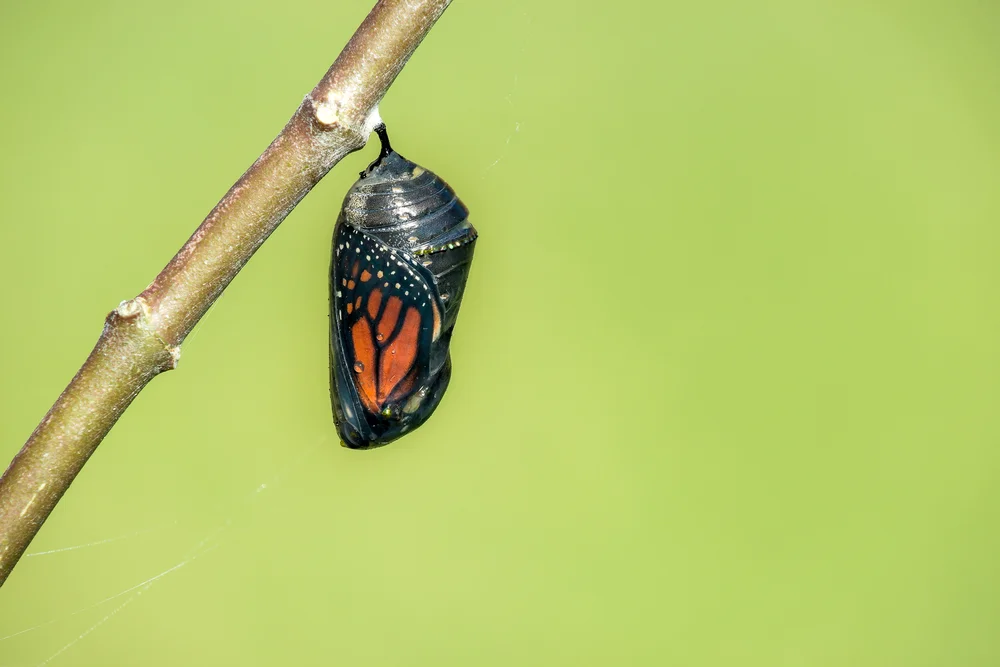The butterfly is one of nature’s most iconic and fascinating creatures, known for its beauty and grace. However, its life cycle is just as captivating, taking place through several stages of transformation. Understanding the life cycle of a butterfly provides insight into the intricate process of metamorphosis, a remarkable phenomenon that occurs in many insect species. This article will focus on the journey of a butterfly from egg to caterpillar and beyond, exploring the stages of growth and the marvel of its transformation. https://pussmoth.com/ciclo-de-vida-de-la-mariposa-la-oruga
1. The Butterfly Life Cycle: An Overview
The life cycle of a butterfly is composed of four main stages: egg, larva (caterpillar), pupa (chrysalis), and adult (butterfly). Each stage is distinct and plays a crucial role in the development of the insect. The cycle starts when an adult butterfly lays its eggs on a suitable host plant, and ends when a new butterfly emerges, continuing the cycle of life.
2. The Egg Stage: Beginning of the Journey
The first stage in the butterfly’s life cycle begins when an adult female butterfly lays her eggs. This typically occurs on specific host plants, which will serve as food sources for the larvae once they hatch. Butterfly eggs vary in shape, size, and color depending on the species. Some eggs are round, while others are oval or cylindrical. They are often laid in clusters on the underside of leaves, providing protection and proximity to the food source.
The egg stage is relatively short, lasting anywhere from a few days to a couple of weeks, depending on the environmental conditions such as temperature and humidity. During this time, the egg undergoes a process of development, with the embryo inside growing larger until it is ready to break free from its shell.
3. The Larval Stage: The Caterpillar
Once the egg hatches, the next stage begins: the larval stage, commonly known as the caterpillar. The tiny caterpillar emerges and is often extremely small, usually no more than a few millimeters in length. At this stage, the caterpillar’s primary job is to eat and grow. Caterpillars are voracious eaters, and they consume leaves and other plant matter in large quantities. The caterpillar’s body is equipped with specialized mouthparts called mandibles, which help it chew through tough plant material.
As the caterpillar grows, it will molt (shed its skin) several times. These molts are necessary because the caterpillar’s exoskeleton doesn’t grow with it. Each time the caterpillar molts, it reveals a larger, more developed body beneath. The process of growing and shedding the exoskeleton continues until the caterpillar reaches its full size, which can take anywhere from a few weeks to a couple of months, depending on the species.
Caterpillars come in a wide range of colors and patterns, some of which serve as camouflage to help protect them from predators, while others are brightly colored to signal danger, such as toxicity or bad taste.
4. The Pupa Stage: The Chrysalis
Once the caterpillar has reached its full size, it enters the next phase of its life cycle: the pupa stage, or chrysalis. Before entering the chrysalis, the caterpillar will often stop feeding and search for a safe place to begin the transformation. It will attach itself to a surface, usually with silk threads that it secretes, and begin to form the chrysalis around itself.
During the pupal stage, the caterpillar undergoes one of nature’s most extraordinary transformations: metamorphosis. Inside the chrysalis, the caterpillar’s body breaks down, and the cells reorganize to form the adult butterfly. This process can take anywhere from a week to several months, depending on environmental factors and the species of butterfly.
It is fascinating to note that, although the caterpillar appears to be in a dormant state, significant changes are happening inside the chrysalis. The caterpillar’s body essentially liquefies, and from that liquid, the adult butterfly gradually emerges. The chrysalis serves as protection during this vulnerable phase of the life cycle.
5. The Adult Stage: The Butterfly
After the metamorphosis is complete, the adult butterfly emerges from the chrysalis. It is a delicate and vulnerable moment for the butterfly, as its wings are initially soft and crumpled. The butterfly will need to wait for its wings to dry and harden before it can take its first flight. This process can take several hours, during which the butterfly may rest and pump fluid into its wings to expand them fully.
Once the wings are fully developed, the butterfly is ready to begin its life as an adult. The adult butterfly’s main focus is to find a mate and reproduce. Butterflies have a relatively short lifespan as adults, often only living for a few weeks to a month. During this time, they will feed on nectar from flowers, using their long proboscis to extract the sweet liquid. Their primary role in nature is to pollinate plants, as they move from flower to flower in search of food.
After mating, female butterflies will lay their eggs on suitable host plants, starting the cycle all over again. Some species of butterflies will die shortly after mating, while others may live a bit longer, continuing their role in the ecosystem.
6. The Importance of Butterflies in Nature
Butterflies play a significant role in ecosystems around the world. They are pollinators, helping to fertilize plants by transferring pollen as they feed on nectar. This process is essential for the production of many fruits, seeds, and plants that humans and other animals rely on.
In addition to their role in pollination, butterflies also serve as a food source for various predators, including birds and small mammals. Their life cycle contributes to the balance of nature, providing sustenance for other species while maintaining the health of plant life through pollination.
7. Conclusion: The Fascinating Journey of the Butterfly
The life cycle of the butterfly, from egg to caterpillar, then pupa to adult, is a beautiful and intricate process that showcases the wonders of nature. Each stage of development is carefully timed and essential for the butterfly’s survival and reproduction. Through metamorphosis, the caterpillar transforms into a magnificent butterfly, ready to begin the cycle again.
This life cycle highlights the amazing adaptability of nature and reminds us of the importance of protecting the environments in which these creatures live. From the humble egg to the graceful butterfly, the journey is one of transformation, growth, and renewal—a true testament to the wonders of life on Earth.



